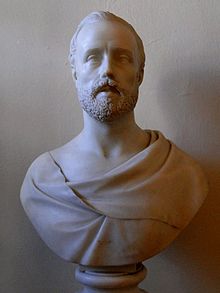Pope’s nephew used position to acquire wealth to buy art
.jpg) |
| Ottavio Leoni's portrait of Cardinal Scipione Borghese |
As the nephew of Pope Paul V, Borghese was given the official title of Cardinal Nephew - cardinale nipote - and he had great power as the effective head of the Vatican government. He amassed an enormous fortune through the papal fees and taxes he gathered and he acquired vast amounts of land. He was able to use his immense wealth to assemble a large and impressive art collection.
Cardinal Borghese was the son of Francesco Caffarelli and Ortensia Borghese. When his father suffered financial difficulties, his uncle, Camillo Borghese, stepped in to pay for his education.
After Camillo Borghese was elected as Pope Paul V, he made his nephew a Cardinal and gave him the right to use the Borghese name and coat of arms.
Borghese was given many honours by his uncle, the Pope, who entrusted him with the management of the papal finances as well as the finances of the Borghese family.
He used money from the papal finances to fund Borghese family investments and, exploiting his power as Cardinal Nephew, he compelled people to sell their land to him at discounted prices.
 |
| Caravaggio's Madonna and Child with Saint Anne |
The Pope gave Scipione a collection of 107 paintings that he had confiscated from the artist Cavalier d’Arpino when he did not pay a tax bill. The haul included two important, early works by Caravaggio, a probable self-portrait usually called Bacchino Malato - Sick Bacchus - and A Boy with a Basket of Fruit. He also organised the removal of Raphael’s Deposition from a church in Perugia to be given to his nephew. He was later forced to provide Perugia with two good copies of the painting in order to avoid the population of the city rising up in violent rebellion against him.
Borghese also appropriated Caravaggio’s Madonna and Child with Saint Anne, a large altarpiece which had been commissioned for a chapel in St Peter’s Basilica. It was suspected that he had planned to acquire it for his collection when the work was commissioned.
The Cardinal’s patronage of Bernini helped the artist become the leading Italian sculptor and architect of the 17th century in Italy.
Between 1618 and 1623, Bernini worked primarily for the Cardinal Nephew, creating innovative pieces that foreshadowed the early Baroque style. He produced two marble busts of his patron, which are both in the Galleria Borghese in Rome, the second carved after Bernini found a flaw in the marble used for the first.
Cardinal Scipione Borghese died in Rome in 1633 and was buried in the Borghese chapel in the Church of Santa Maria Maggiore in Rome.
 |
| The Galleria Borghese is housed in the Villa Borghese Pinciana |
The Villa Borghese Pinciana, built for Scipione Borghese by the architect Flaminio Ponzio, which now houses the Galleria Borghese, was originally intended as a party villa, where Scipione would entertain guests. The villa and the gardens surrounding it, developed on the site of a former vineyard, were acquired by the Italian state from the Borghese family in 1901 and opened to the public two years later. Generally known as the Villa Borghese Gardens, they now form the third largest public park in Rome, covering an area of 80 hectares or 197.7 acres, with entrances near the Spanish Steps and Piazza del Popolo. The Pincio, in the south part of the park, offers one of the finest views over the city. Other villas in the area of the park include the Villa Giulia, which now houses the Etruscan Museum, and the Villa Medici, home of the French Academy in Rome. The Piazza di Siena, an open space within the gardens, hosted equestrian events at the 1960 Rome Olympics.
Rome hotels from Expedia
_-_2021-08-29_-_1%20(2).jpg) |
| The main facade of the Palazzo Borghese, which was the Borghese family's principal Rome residence |
The Palazzo Borghese, the original home of the family’s art collection, is notable for its unusual trapezoidal layout, having two parallel sides but two that are not parallel, with its narrowest facade facing the Tiber. It was the main seat of the Borghese family in Rome, situated in the Campo Marzio district, not far from the Ponte Cavour and about 600m (0.37 miles) on foot from the Spanish Steps. It was built in about 1560-61 by the architect Giacomo Barozzi da Vignola on behalf of Monsignor Tommaso del Giglio and acquired by Cardinal Camillo Borghese in 1604, shortly before he became Pope Paul V. The first floor of the palace has been the home of the Embassy of Spain in Italy since 1947. The Borghese family’s art collection, which contained works by Raphael, Titian and many others, was transferred in 1891 to the Galleria Borghese.
Find a Rome hotel with Hotels.com
Also on this day:
1878: The birth of conductor Tullio Serafin
1886: The birth of vaudeville star Guido Deiro
1922: The birth of actor Vittorio Gassman
1950: The birth of crime writer Michele Giuttari
.jpg)



.jpg)

.jpg)
_-_VIA_CRUCIS_II_-_Jesus_carries_his_cross_by_Giandomenico_Tiepolo%20(1).jpg)

.jpg)


.jpg)

.jpg)


%20(1).jpg)

.jpg)





.jpg)

.jpg)
.jpg)
_nave_left_-_Altar_of_Madona_di_Ca'Pesaro%20(2).jpg)

